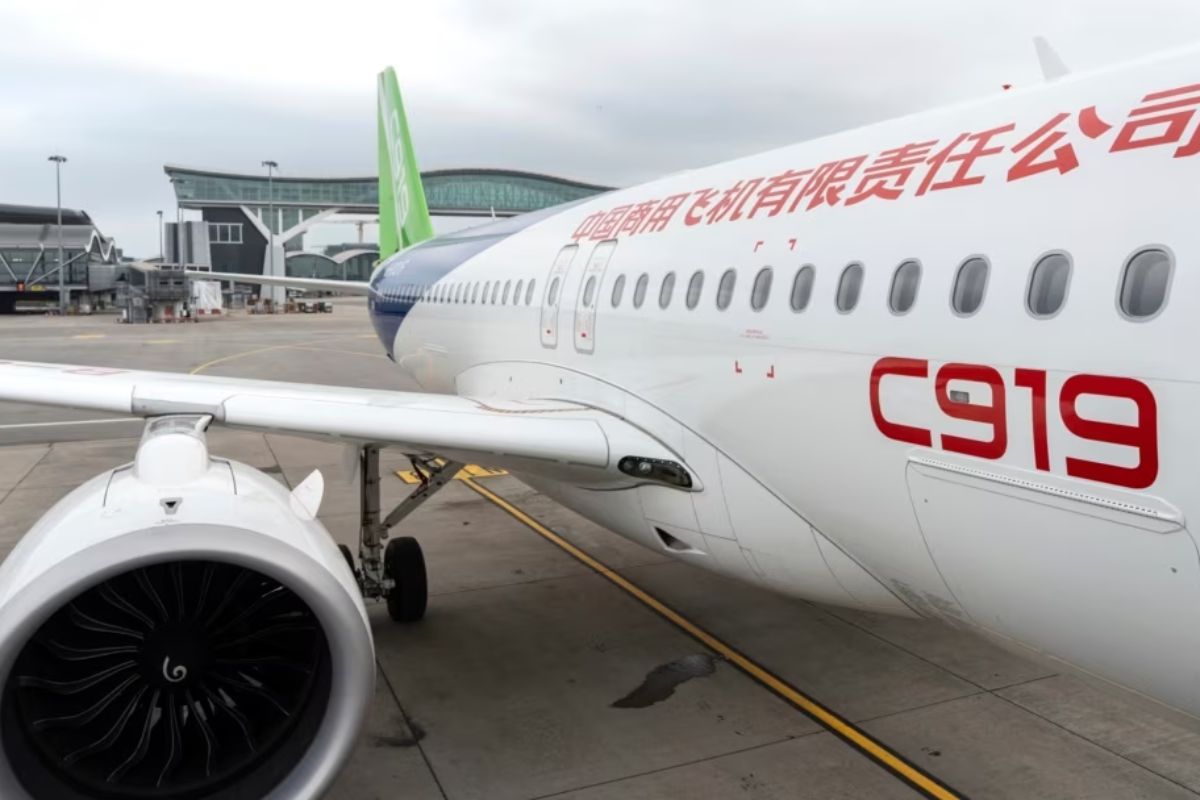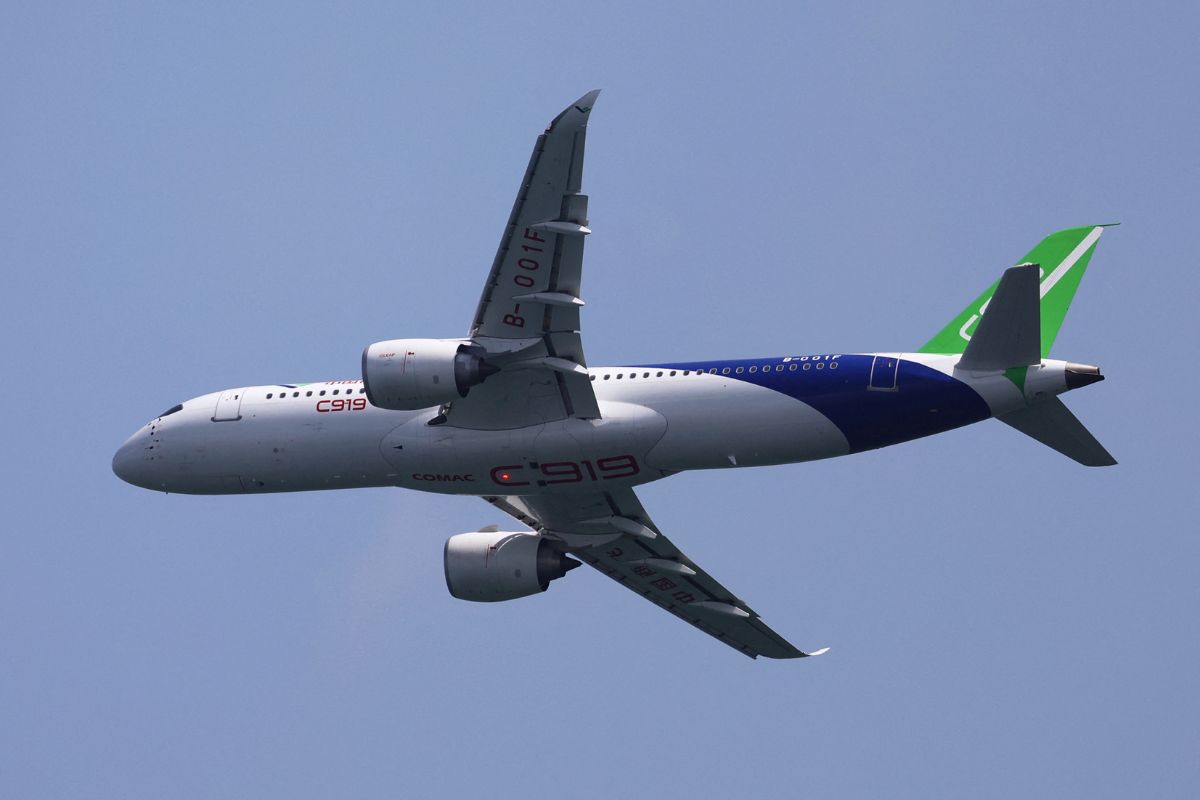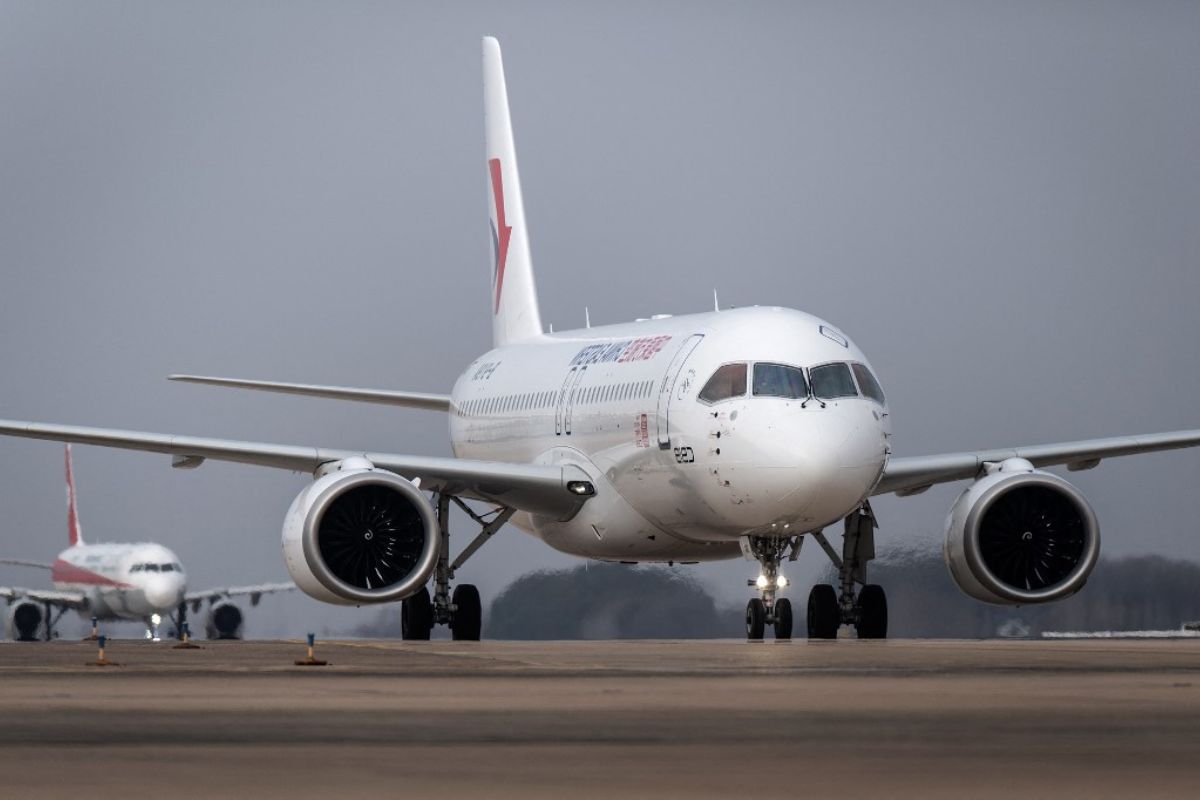China’s Revolutionary Airliner: China’s C919 airliner has made a significant impact at the Singapore Airshow, marking a milestone in the aviation industry. With COMAC’s ambitious plans for both domestic and international expansion, the C919 is poised to challenge established players in the market.
Strategic investments in production capacity underscore China’s commitment to becoming a major player in the global aviation sector. As international certification efforts gain momentum, industry attention is increasingly turning towards the C919.
The potential market opportunities for this revolutionary airliner are vast, but looming challenges may shape its journey ahead.
Key Takeaways
- Challenging Airbus and Boeing dominance with advanced features and competitive pricing.
- Showcasing China’s technological prowess and ambition to shift industry power balance.
- Strategic expansion plans with operational deployment and global recognition efforts.
- Significant investments in production, technology, and market expansion to solidify industry position.
C919’s Milestone at Singapore Airshow
Has the C919’s debut at the Singapore Airshow signaled a new era in the global aviation industry, challenging the dominance of Airbus and Boeing? The answer seems to be a resounding yes.
China’s foray into the passenger jet market with the C919, showcased at the prestigious Singapore Airshow, is a bold statement of intent. This move by the Commercial Aircraft Corporation of China (COMAC) is a testament to China’s unwavering commitment to disrupting the longstanding duopoly held by Airbus and Boeing.
Also Read: United Airlines Executive Attributes Boeing Issues to Loss of Industry Expertise
The C919’s presence at the airshow not only signifies China’s technological prowess but also its ambition to compete on a global scale. With its sleek design, advanced features, and competitive pricing, the C919 poses a formidable challenge to the established giants of the aviation industry.
The aviation world is now abuzz with anticipation as China’s revolutionary airliner takes center stage, setting the stage for a potential shift in the balance of power in the skies.
COMAC’s Push for Domestic and International Expansion
China’s ambitious endeavor with the C919 at the Singapore Airshow has sparked a fervent drive for both domestic and international expansion as COMAC aims to solidify its position as a formidable player in the global aviation market.
With the C919 currently certified only within China and operational flights underway with China Eastern Airlines, COMAC is poised to make a significant impact on the aviation industry.
As Airbus and Boeing struggle to keep up with the escalating demand for new aircraft, COMAC’s strategic push for expansion is being closely watched by industry experts worldwide.
The company’s commitment to advancing the C919 and expanding its influence signals a bold move towards challenging the dominance of established aircraft manufacturers.
Strategic Investments in C919 Production Capacity
Strategically positioning the C919 for global dominance, COMAC’s substantial investments in production capacity underscore its relentless pursuit of industry disruption and innovation. With plans to inject tens of billions of yuan into ramping up production capabilities over the next 3-5 years, COMAC is sending a clear message to the aviation world: the C919 is a force to be reckoned with.
This strategic move not only highlights China’s ambitions to challenge Western aviation giants but also reflects the country’s commitment to technological advancement and market expansion. By bolstering production capacity, COMAC aims to meet the growing demand for the C919 both domestically and internationally, solidifying its position as a key player in the global aviation market.
As industry observers closely monitor these developments, it is evident that COMAC is on a trajectory towards reshaping the aviation landscape and setting new standards for excellence in the industry.
International Certification Efforts and Industry Attention
Amidst the aviation industry’s watchful gaze, COMAC’s push for European Union Aviation Safety Agency (EASA) validation for the C919 in 2024 marks a decisive step towards global recognition and acceptance. The C919’s current certification by Chinese regulators alone has not deterred COMAC from striving for broader acknowledgment, a move that has captivated industry experts.
As the aviation sector grapples with a supply crunch, the C919’s potential EASA validation has become a focal point for many. The aircraft’s inclusion in fleet evaluations by prospective customers signifies a shift in perceptions, hinting at a future where the C919 could feature prominently in international fleets.
| International Certification Efforts | Industry Attention |
|---|---|
| EASA validation in 2024 | Growing consideration in the industry |
| Recognition for global standards | Captivating industry experts |
| Broadening horizons beyond Chinese certification | Potential inclusion in international fleets |
| Decisive step towards global acceptance | Focal point amidst supply chain challenges |
| Signifying COMAC’s determination | Shifting perceptions towards the C919 |
Market Potential and Challenges Ahead
With the aviation industry poised for a groundbreaking shift, COMAC’s C919 stands at the precipice of unparalleled market opportunities and formidable challenges. As the company aims to seize the gap left by sold-out Airbus and Boeing narrow bodies, the C919 holds significant potential, particularly in the domestic market. The aviation consultancy IBA’s forecast of 7-10 C919 deliveries in 2024 underscores the promising outlook for this revolutionary airliner.
However, hurdles loom large on the horizon, including the pressing need for ramped-up production to meet local demand and the critical certification process essential for breaking into international markets. The following bullet points encapsulate the market potential and challenges that COMAC must navigate to secure a substantial share in the global aviation arena:
- Seizing the opportunity presented by the gap in the market left by established competitors.
- Meeting the escalating demand for the C919 within China’s rapidly expanding aviation sector.
- Overcoming the challenges associated with scaling up production to fulfill market needs.
- Navigating the complex process of obtaining international certifications to access global markets.
- Balancing the pursuit of market expansion with ensuring the aircraft’s safety and reliability to gain industry trust and acceptance.
Conclusion Of China’s Revolutionary Airliner
The C919 airliner’s debut at the Singapore Airshow marks a significant milestone for China’s aviation industry. With strategic investments in production capacity and international certification efforts, COMAC is poised for both domestic and global expansion.
Despite facing challenges ahead, the C919’s market potential and industry attention indicate a promising future for China’s revolutionary aircraft on the global stage.
Our Reader’s Queries
Q1 Which country made C919 engine?
A Regarded by Beijing as a competitor to foreign counterparts such as Boeing’s 737 MAX and the Airbus A320, the C919 is a twin-engine aircraft produced by the state-owned aerospace manufacturer, the Commercial Aircraft Corporation of China (Comac). Notably, numerous components for the C919 are procured from international sources.
Q2 What is the code C919?
A The abbreviation “C919” stands for the trunk liner code of “COMAC919,” with “COMAC” representing the Commercial Aircraft Corporation of China, Ltd. The letter “C” holds significance as it is the initial letter in both “COMAC” and “China.”
Q3 Who is the manufacturer of Chinese passenger aircraft?
A The primary role of the Commercial Aircraft Corporation of China, Ltd. (COMAC) is to spearhead and execute major passenger aircraft programs in China.




